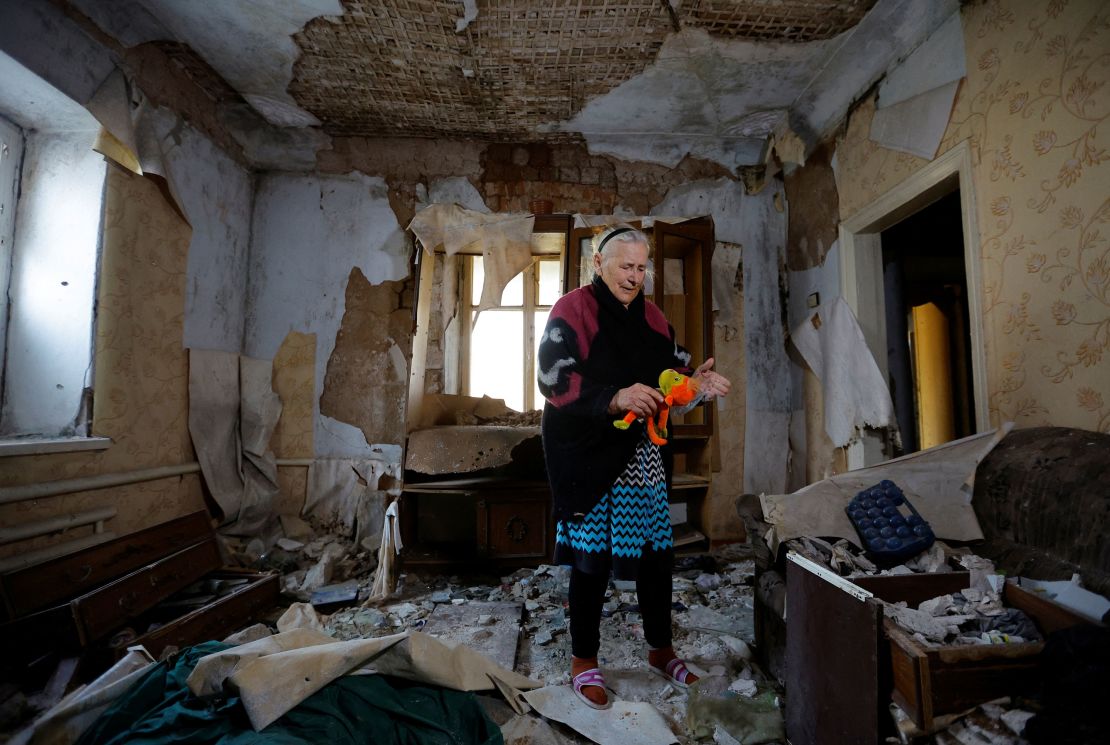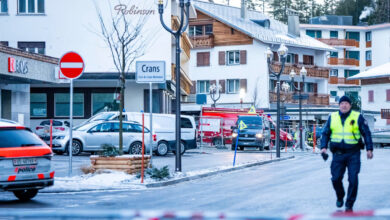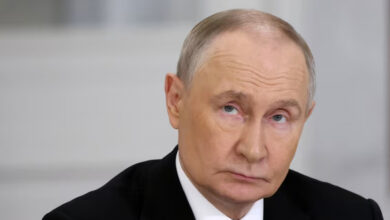
The international watchdog found that Russia’s siege on the city in 2022 involved the repeated targeting and destruction of civilian buildings and infrastructure, an apparent violation of international humanitarian law.
It estimated that around 8,000 people died as a direct result of the fighting, drawing in part on a review of satellite imagery, photos and videos of the city’s cemeteries, but noted that the figure is a conservative estimate.
The 215-page report, based on research conducted over nearly two years in conjunction with Ukrainian human rights group Truth Hounds, detailed efforts by Russian authorities to erase Ukrainian culture from the city since its capture, limiting the movements of Ukrainians and imposing a pro-Kremlin narrative in its schools and public spaces.
Russian forces encircled Mariupol within days of the full-scale invasion of Ukraine in February 2022, before launching a months-long bombardment to break down a stubborn Ukrainian military resistance.
The city, which lies on the Sea of Azov in Ukraine’s southeast, saw some of the most intense and vicious fighting of the war.
“It was a cruel and devastating assault; people we interviewed who managed to escape described that period as hell on earth,” Ida Sawyer, the director of HRW’s crisis and conflict division, told CNN.
“We see this as one of the worst chapters of Russia’s invasion of Ukraine,” she said. “We hope that this project will serve to help ensure that there is justice.”
The report traced the destruction by Russian forces of thousands of buildings, including hundreds of high-rise apartment blocks and civilian infrastructure such as hospitals, schools and universities.
It also identified 17 specific Russian or Russian-affiliated military and national guard units operating in the city during the peak of the fighting in March and April of 2022, as well as senior figures who it said may bear criminal responsibility.
“It was clear that senior level officials up to President Putin were aware of the situation in Mariupol, and do appear to have been directly involved in the planning and coordination” of the assault on the city, Sawyer said.
Putin is already the subject of an arrest warrant for war crimes from the International Criminal Court (ICC), which says the Russian president bears individual responsibility for the unlawful abduction and deportation of Ukrainian children to Russia.
The HRW report recommends that he and other high-ranking commanders are investigated and properly prosecuted for their role in apparent war crimes relating to the campaign in Mariupol, for unlawful attacks and “the possible arbitrary blocking of humanitarian aid and evacuations.”

“Despite the challenges of investigating war crimes in areas made inaccessible by Russian occupation, we and our partners have spent nearly two years uncovering the truth about the horrific crimes committed by Russian forces in Mariupol,” Roman Avramenko, the executive director of Truth Hounds, said in a statement.
The report cautioned that the true death toll may be significantly higher than the estimate of 8,000, given that the remains of many people may have been buried under rubble or in makeshift graves containing multiple bodies.
Its authors conducted interviews with 240 people, mostly displaced Mariupol residents, and analyzed local records, satellite imagery and photographs to reach their conclusions.
Mariupol became a symbol of Ukrainian resistance during relentless Russian attacks, as Moscow made the city’s capture one of its key priorities in the first months of the war.
While most of the city had already fallen, a number of Ukrainian troops held out at the Azovstal steel plant, where as many as 1,000 civilians had taken shelter at one point. Ukrainian officers described a bleak situation inside the facility, as stocks of food and water dwindled and hundreds of wounded were stranded without proper medical care.
Even as fighting for the city raged, concerns were rife that Moscow’s forces could conceal evidence of possible war crimes in the city.
The city council accused Russian forces at the time of trying to erase evidence, using mobile crematoria to dispose of bodies and identifying witnesses to any “atrocities” through filtration camps. CNN could not verify the claims, but did report on Russia’s use of filtration camps outside of the city.
The Kremlin denied many of these claims, including using filtration camps to cover up wrongdoing and targeting civilians in Mariupol.
Since the city fell, Russian-backed authorities have undertaken an extensive campaign of Russification, attempting to impose the Kremlin’s narrative of events and history onto those who remained.
Russian authorities plan to rebuild the city in Moscow’s image by 2025, with further development by 2035, the HRW report outlined. It found that they were already “stripping away markers of Ukrainian identity, enforcing a Russian school curriculum, and requiring residents to obtain Russian passports in order to apply for certain jobs, be eligible for social welfare payments, and benefit from public health care.”
School textbooks have been quickly replaced with curriculum referring to Ukraine as a “neo-Nazi state.” Residents with known pro-Ukrainian sympathies are kept under close watch and could face difficulties leaving the city, the report found.
“They’re working to transform the city’s cultural landscape,” Sawyer said.
The capture of Mariupol marked a protracted but significant breakthrough for Russian forces after their initial, full-scale invasion into the center of Ukraine was repelled and pushed back by Kyiv’s troops.
Russia subsequently refocused its efforts in Ukraine’s east and south, where the fighting became attritional and territorial gains became harder for either side to come by.




